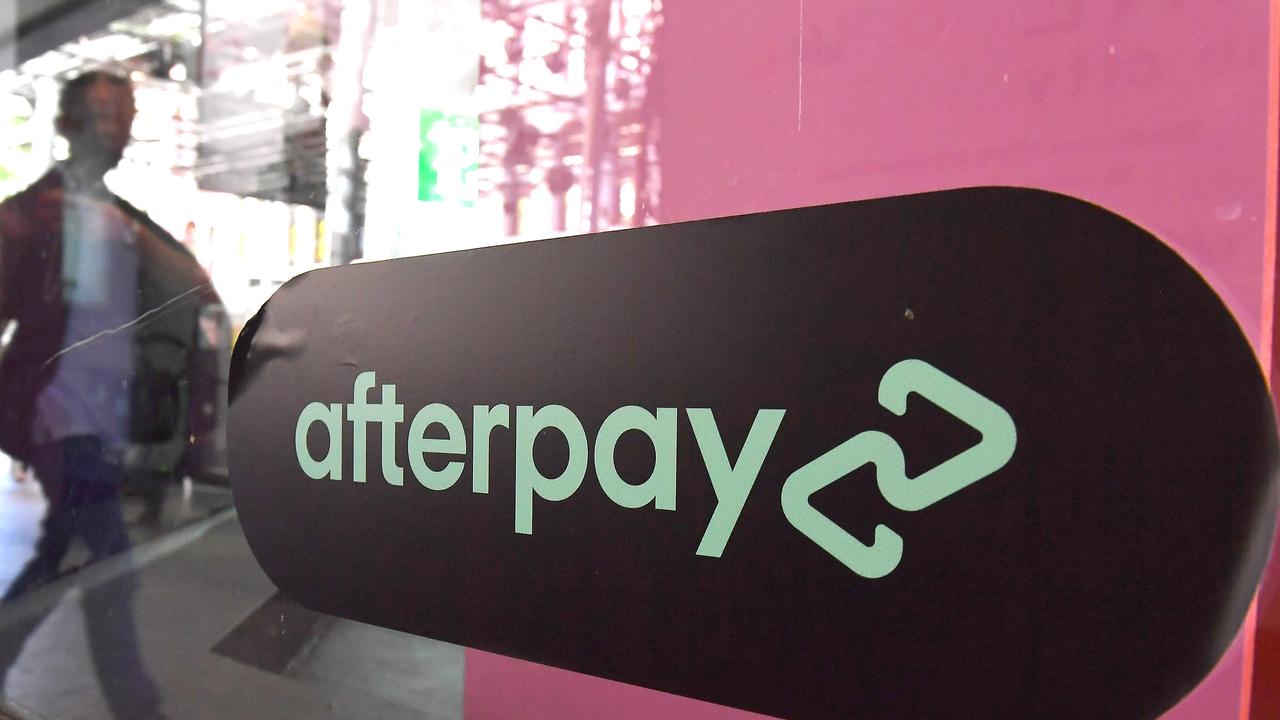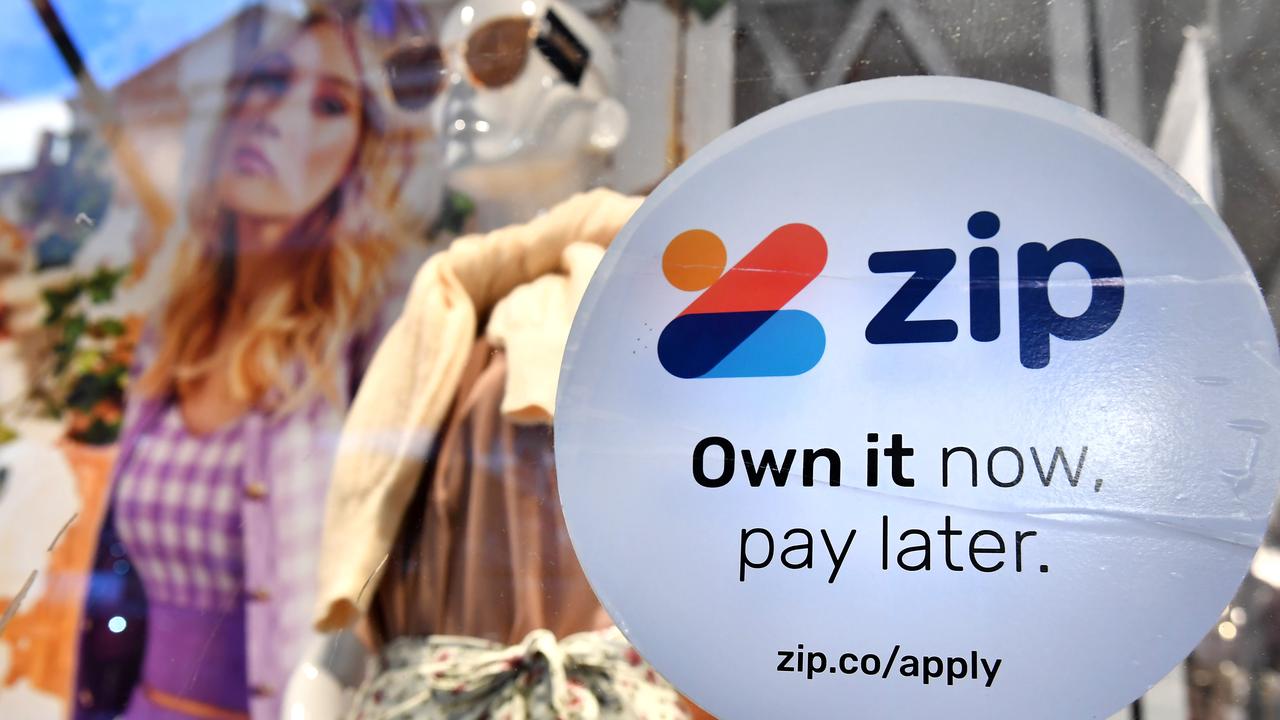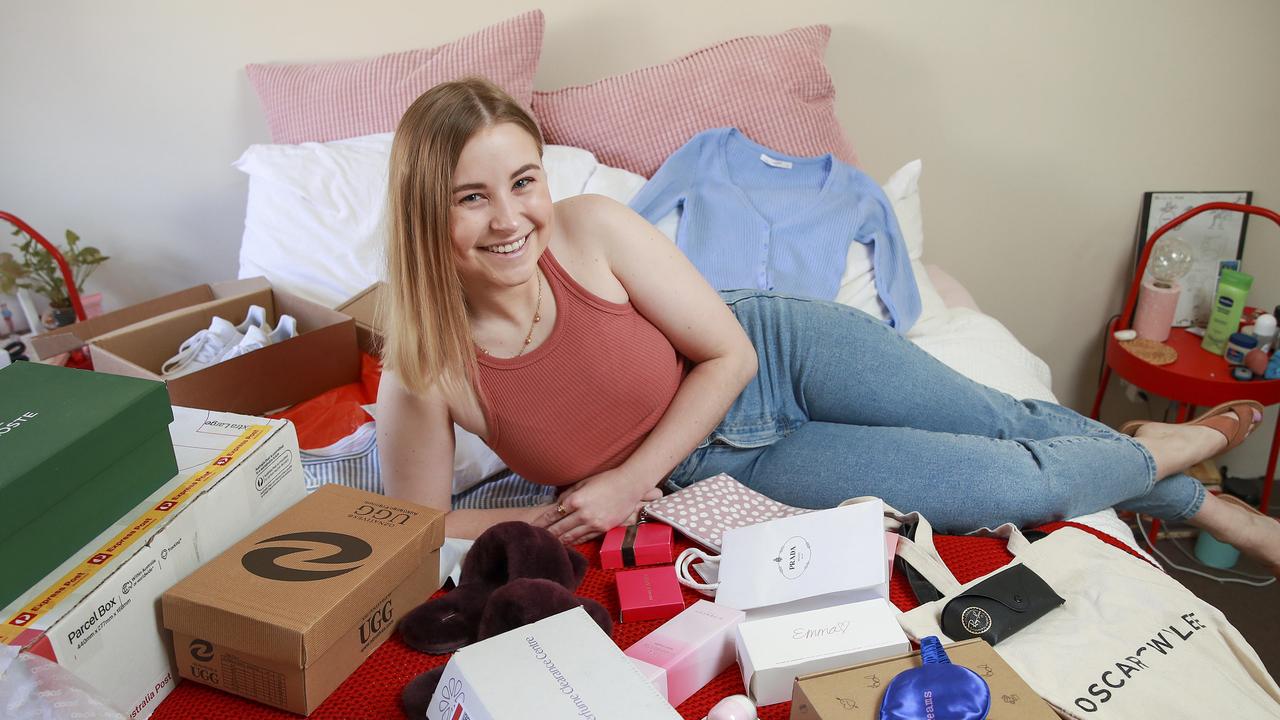PayPal takes on Afterpay with ‘pay in 4’ option
It’s a popular way to shop for many young Aussies, but a controversial part of the sector which costs people millions has been cut by a new player.

PayPal has introduced a buy now, pay later option for its nine million Aussie customers, but has ditched one of the sector’s most controversial measures.
The US payment giant is muscling in on Australian company AfterPay’s territory, which currently has a 73 per cent share of the market.
PayPal’s new option called ‘Pay in 4’, is exactly the same business model as Afterpay – allowing people to make four interest-free payments – but it won’t charge late fees.
Afterpay made $70 million in late fees in 2020, while Credit Suisse has estimated the company will earn about $107 million this year from the charges.
In the 2018-19 financial year, missed payment fee revenue for all buy now, pay later providers totalled over $43 million, a report from the Australian Securities and Investments Commission (ASIC) released last year found.
The corporate regulator has criticised buy now, pay later providers such as Afterpay, Zip and Humm for charging excessive late or other fees.
It found one in five buy now, pay later users are missing payments, with the younger generation particularly impacted as half of users aged between 18 to 29 cut back on essential items to make repayments.
It’s report also revealed more than 1.1 million transactions in 2019 incurred multiple missed payment fees and warned that 15 per cent of users, and half of which were under 29, had taken out an additional loan to pay for the services.
RELATED: New rules for ‘buy now, pay later’ companies

‘The right thing to do,’ says PayPal
Recent research commissioned by PayPal found that 96 per cent of online shoppers in Australia are aware of buy now, pay later, but 55 per cent have not used it.
Late fees are a key reason for avoiding it, according to the research, with 50 per cent of Aussie online shoppers saying they would not use a buy now, pay later service with “high late fees”.
Andrew Toon, general manager of payments at PayPal Australia, said it was launching no late fees in Australia because “it’s the right thing to do”.
“We are backing the strength of our systems to determine consumer suitability for PayPal ‘Pay in 4’ and we believe we have the right measures in place to support our no late fees approach,” he said.
“Our business model does not rely on late fee revenues and we believe that many people who miss a payment do so by mistake, not design.”
While some Aussies may avoid the sector, it’s become increasing popular with huge growth experienced in recent years.
The number of buy now, pay later transactions in Australia increased from 16.8 million in the 2017-18 financial year to 32 million in the financial year 2018-19, representing an increase of 90 per cent, ASIC’s report found.
RELATED: Buy now, pay later upstart breaks records

Approaches to late fees
When it comes to late fees, each company in Australia has a different approach.
Afterpay has a tiered system depending on how much has been spent, slugging customers $10 plus $7 more if an account is unpaid for seven days, with people locked out of the service until their account is paid is up to date.
Afterpay’s late fees, which it argues are necessary to prompt payment from customers, are capped at $10 for purchases under $40, and the lesser of 25 per cent of the order value and $68 for purchases over $40.
Another well-known provider, Zip Pay, charges $5 for an account that is 21 days overdue and an ongoing fee of $6 when there is an outstanding balance.
Other providers such as Humm charge a $6 late fee, plus $8 a month as an ongoing fee, while Commonwealth Bank owned service Klarna charges between $3 and $15, depending on how much has been spent, which is capped at a maximum of between $9 and $45.
Recent data released by consumer credit marketplace and technology firm ClearScore revealed that over the past eight months, the number of consumers running up three or more buy now, pay later debts has jumped to 30 per cent of users, while the number having missed repayments has blown out by 83 per cent.
“Sooner or later a cohort of consumers will fail to keep up with snowballing repayments that attract steep late fees relative to the amount borrowed,” warned Steve Smyth, ClearScore’s Australian managing director.
“When those debts are sold on to collection agencies, they will show up as multiple defaults, even if the dollar amount defaulted is comparatively small. This is a consumer credit access horror show in the making.”

Consumer advocacy warnings
The amount of credit accessible wildly varies between providers, with Afterpay offering $600 credit upfront to new customers, Humm has a staggering $30,000 available first up, while PayPal’s maximum is $1500.
But consumer advocacy groups have warned that customers aren’t limited to one buy now, pay later account and can rack up multiple debts, while not enough checks and balances are in place.
Providers aren’t regulated under Australia’s National Credit Code like credit cards and payday loan because they don’t charge interest and as a result the buy now, pay later sector doesn’t fall under its responsible-lending and financial-hardship regulations.
In Australia, 95 per cent of the buy now, pay later market is controlled by eight companies – Afterpay, Brighte, Humm Group, Klarna, Latitude, Openpay, Payright and Zip Co. They have signed to a voluntary code of conduct, which came into effect in March this year.
As part of the code they carry out, “in-life suitability assessments” for all customers, with at least one check required for those borrowing less than $2000.
The Australian Finance Industry Association told consumer advocacy group Choice that the advantage of industry self-regulation is that it can be dynamic in the way that legislation cannot – meaning it can keep pace with innovation, changes with technology, and changes in community expectations.
It added there are serious consequences for breaches of the voluntary code such as naming and shaming providers, reporting systematic breaches to ASIC or suspension of their membership.

But Patrick Veyret, Choice senior policy and campaigns adviser, said that “an industry code is no substitute for a rigorously enforced law”.
“While there have been minor improvements for consumers, at its core, the BNPL code is a diversionary tactic by the industry to ward off government regulation,” he said.
“Make no mistake – buy now, pay later is a form of credit and should be regulated as such. The industry is relying on a loophole in the law. It is especially concerning to see operators selling people into BNPL loans up to $30,000 without protections of existing credit law,” Mr Veyret said.
Where buy now, pay later could go next
When using buy now, pay later, about a quarter of Aussie shoppers having used it to purchase clothing and accessories, followed by electronics and computing, according to PayPal’s research.
Health and beauty and home and gardening-related products were also popular choices for Australians when splitting the cost of payments.

Interestingly, there is a growing interest from Aussies to use buy now, pay later for other goods, with 27 per cent wanting to use it for household bills and 32 per cent for government fees, as well as travel and event tickets.
Tommy Suffren, PayPal’s consumer insights expert, said it was encouraging to see Australians thinking about spending in sectors which have been hardest hit by the pandemic, including travel and tourism, and ticketed events.
“Additionally, with many watching their wallets at this time, buy now, pay later could take on a role in helping Australians spread out those larger but necessary expenditures such as household bills or even car registration,” he said.
However, PayPal’s Pay in 4 will not be available for certain purchases including gambling, cryptocurrency trading, person-to-person transfers, not-for-profit donations, CFD and Forex.
The minimum spend will be $30 for PayPal’s buy now, pay later services.
For customers to be eligible, their accounts must be in good standing and the use of the service is subject to suitability checks.
To evaluate suitability, PayPal will predominantly use its own data and analytics engines and, when required, will run credit checks with an external credit bureau.
ASIC has flagged regulatory changes coming to the buy now, pay later sector, which will come into force from October this year.
Meanwhile, Apple is reportedly working on its own buy now, pay later service for any Apple Pay purchases, with the option to either make four interest-free payments every two weeks or spread out payments across several months and be charged interest. The option would be available in retail stores and online.




